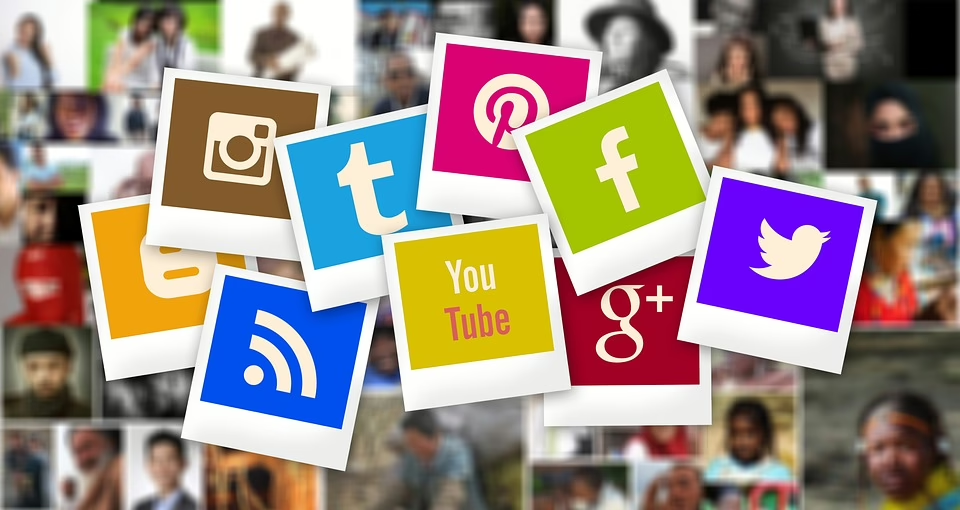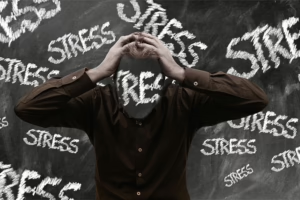Social Norms: How They Shape Our Decisions and Actions
Introduction
Social norms are the unwritten rules that govern behavior within a society or group. These norms influence our decisions, shape our actions, and even affect our identities. They can range from simple everyday conduct to more complex societal expectations. In understanding social norms, we can better grasp the behavioral dynamics that drive human interaction. This article explores the origin, evolution, and impact of social norms on our daily lives.
What are Social Norms?
Social norms are the accepted standards of behavior within a group. They define what is considered appropriate or inappropriate and can vary widely between cultures and subcultures. Social norms can be categorized into three main types:
-
Descriptive Norms: These norms describe how people typically behave in a given situation. They reflect what is common or usual in a society.
-
Injunctive Norms: Unlike descriptive norms, injunctive norms involve perceptions of what actions are approved or disapproved by society. They represent social rules established by community sentiments.
-
Personal Norms: These are the individual moral standards that guide a person’s behavior. While influenced by societal norms, personal norms can vary significantly between individuals.
Understanding these distinctions is crucial for comprehending the role of social norms in shaping individual behavior and group dynamics.
The Formation of Social Norms
The formation of social norms is a complex social phenomenon that unfolds over time. Several factors contribute to their development:
1. Cultural Influences
Cultural context plays a significant role in shaping social norms. Norms are often deeply embedded in cultural practices, traditions, and values. For instance, collectivist societies may emphasize norms that prioritize group harmony and discourage individualism, while individualistic cultures may promote personal achievement and self-expression.
2. Reinforcement Mechanisms
Social norms often become established through reinforcement mechanisms such as social approval and disapproval. Positive reinforcement encourages adherence to norms, while negative consequences deter deviance. Public praise for following norms or social ostracization for breaking them can solidify these unwritten rules.
3. Socialization Process
From a young age, individuals are socialized into norms through family, education, and peer interactions. Parents, teachers, and friends convey normative expectations, establishing a foundation for conformity. This process continues throughout life as individuals navigate different social contexts.
4. Social Identity Theory
Social identity theory posits that individuals derive a sense of identity from the groups to which they belong. Norms help solidify group identity, creating a framework for behavior that reinforces belonging. This can lead to both positive and negative outcomes, including in-group favoritism and out-group prejudice.
The Impact of Social Norms on Behavior
1. Decision-Making
Social norms significantly influence decision-making processes. Individuals often look to others when faced with a choice, especially in uncertain situations. This phenomenon is known as the “bandwagon effect,” where people adopt behaviors simply because others are doing so.
For instance, in public settings, individuals might engage in littering if they observe others doing the same, despite knowing it is socially unacceptable. The pressure to conform can outweigh personal convictions, highlighting the power of social norms on decision-making.
2. Conformity and Obedience
Conformity refers to the tendency to align one’s attitudes, beliefs, and behaviors with those of a group. Research by Solomon Asch demonstrated that individuals are often willing to go against their judgment to conform to group norms.
Obedience, on the other hand, involves complying with a directive from an authority figure. Stanley Milgram’s experiments showcased how social norms regarding obedience can lead individuals to perform actions that conflict with their personal ethics. These findings underline the pervasive influence of social norms on individual actions.
3. Change and Resistance
Social norms are not static; they evolve over time. However, changing a deeply entrenched norm can be met with significant resistance. Normative social influence can create a powerful barrier to change, as individuals fear alienation or backlash for deviating from established practices.
For example, efforts to promote behavioral shifts for environmental sustainability, such as recycling or reduced plastic use, may struggle against the inertia of existing social norms. Resistance to such changes often stems from a fear of social disapproval or a lack of visibility of others engaging in desired behaviors.
4. Normalization of Deviance
Normalization of deviance occurs when unacceptable behaviors become accepted over time. Sociologist Diane Vaughan studied this phenomenon, illustrating how organizations can become complacent about deviant behavior. As a norm evolves, behaviors once deemed unacceptable may become the new standard, which can lead to disastrous consequences.
Prominent examples include the culture at NASA prior to the Challenger disaster, where risk-taking behaviors became normalized, ultimately leading to tragedy. Addressing such deep-seated norms typically requires concerted efforts and significant cultural shifts.
Social Norms in Context
1. Workplace Norms
In the workplace, social norms shape organizational culture and employee behavior. These norms can influence everything from dress code, communication styles, and work ethics to collaborative behaviors and conflict resolution strategies. For instance, in a highly competitive environment, norms may encourage long working hours and prioritization of productivity over personal well-being.
Conversely, organizations promoting work-life balance may cultivate norms that support flexible working arrangements and prioritize employee mental health. Understanding and actively managing workplace norms can significantly impact organizational effectiveness and employee satisfaction.
2. Cultural Norms Around Gender
Gender norms are another area where social norms have a profound influence. These norms dictate behaviors deemed appropriate based on an individual’s perceived gender. For instance, many cultures reinforce the idea that men should be assertive and women nurturing, which can limit individuals’ choices and opportunities.
Efforts to challenge and change gender norms are ongoing, as seen in the rise of movements advocating for gender equality. These social shifts are reflective of a broader cultural acknowledgment of diverse identities and the need to include varied perspectives in societal norms.
3. Social Media and Norms
The advent of social media has significantly changed how social norms are formed and reinforced. Platforms like Twitter, Facebook, and Instagram create spaces where users constantly navigate and negotiate social norms.
For example, the rise of “cancel culture” reflects how social media users often enforce norms around accountability and behavior. Violation of certain social expectations can lead to swift social repercussions, creating both a potent tool for social justice and a complex landscape for social interaction.
The Role of Education in Shaping Norms
Education is a powerful tool for shaping social norms. It influences not only knowledge acquisition but also the reinforcement of social expectations.
1. Curriculum and Social Norms
The curriculum in schools plays a crucial role in teaching students about societal values and expectations. Subjects related to ethics, civics, and social studies provide frameworks for understanding the importance of social norms.
Moreover, discussions about diversity, equity, and inclusion can foster more adaptive and supportive social norms, promoting behaviors that uphold these values. A curriculum that encourages critical thinking and challenges established norms can empower students to question and redefine societal expectations.
2. Peer Influence in Educational Settings
Peer interactions in schools also significantly shape social norms. Adolescents are particularly sensitive to peer influence, often making decisions based on group dynamics.
Anti-bullying programs, for instance, aim to reshape social norms within schools by promoting kindness and inclusivity. Successful implementation often hinges on student buy-in; when positive behaviors are visible and rewarded within a peer group, they are more likely to become norms.
Psychological Perspectives on Social Norms
Several psychological theories help explain the relationship between social norms and individual behavior.
1. Theory of Planned Behavior
The Theory of Planned Behavior (TPB) posits that individuals’ intentions to engage in a behavior are shaped by attitudes, subjective norms, and perceived behavioral control. Social norms, therefore, directly influence performance intentions.
When a group promotes a behavior—such as recycling—an individual’s likelihood of adopting that behavior increases if they perceive that important others believe they should engage in it.
2. Social Learning Theory
Albert Bandura’s Social Learning Theory emphasizes that individuals learn behaviors by observing others. This theory highlights the role of social norms in the modeling of behavior; when individuals observe peers or authority figures engaging in specific behaviors, they are more likely to emulate those actions.
For example, if an influential figure in a community promotes adherence to health guidelines, it can enhance the likelihood of others in that community following suit.
3. Cognitive Dissonance Theory
Cognitive dissonance theory explains the discomfort individuals feel when their beliefs and behaviors contradict one another. When social norms dictate a certain behavior, individuals who behave differently may experience cognitive dissonance, leading them to either change their behavior or justify their divergence from social expectations.
This dynamic is particularly relevant in discussions about social justice, where individuals may grapple with their beliefs about equity while recognizing their privileges.
Conclusion
Social norms are fundamental to understanding human behavior and interaction. They shape our decisions, determine our actions, and influence our identities. By examining the formation of social norms, their impact on behavior, and the psychological underpinnings that drive conformity, we gain valuable insights into the complexities of human society.
As societies evolve, so too do social norms. Recognizing their fluidity and the role of culture, education, and context offers opportunities for fostering positive social change. Engaging with and challenging existing norms can pave the way for a more equitable and inclusive society.
Ultimately, awareness of social norms encourages individuals to reflect on their behaviors, consider their impacts within their communities, and strive for alignment with their values. By doing so, we can create environments that promote understanding, acceptance, and positive change for all.
References
- Cialdini, R. B. (2009). Influence: Science and Practice. Pearson Education.
- Asch, S. E. (1951). Effects of Group Pressure upon the Modification and Distortion of Judgments. Journal of Abnormal and Social Psychology, 54(3), 6-12.
- Milgram, S. (1974). Obedience to Authority: An Experimental View. Harper & Row.
- Vaughan, D. (1996). The Challenger Launch Decision: Risky Technology, Culture, and Deviance at NASA. University of Chicago Press.
- Bandura, A. (1977). Social Learning Theory. Prentice Hall.
- Ajzen, I. (1991). The Theory of Planned Behavior. Organizational Behavior and Human Decision Processes, 50(2), 179-211.
This article serves as a comprehensive overview of social norms, but the exploration into their complexity and impact can certainly be expanded in further research and discussion. The nuances of social norms continue to evolve, reflecting the ongoing dialogue within societies aiming for growth and understanding.


























Add Comment